Apollo 8: The Thrilling Story of the First Mission to the Moon
"We choose to go to the moon in this decade and do the other things, not because they are easy, but because they are hard"
In 2014, when I was chosen to co-facilitate the opening session of AIESEC Asia Pacific Congress in the Philippines, I got to know for the first time JFK's speech "We choose to go to the moon."
We choose to go to the moon in this decade and do the other things, not because they are easy, but because they are hard, because that goal will serve to organize and measure the best of our energies and skills, because that challenge is one that we are willing to accept, one we are unwilling to postpone, and one which we intend to win.
Since then, the speech has been my inspiration. It was the main reason why I chose to read the book "Apollo 8: The Thrilling Story of the First Mission to the Moon" by Jeffrey Kluger in August. But it was not until today, my first Christmas Eve in Australia, that I strongly feel an urge to sit down and write a few things about the book.
Simply because 50 years ago, on Christmas Eve 1968, Frank Borman, Jim Lovell, and Bill Anders became the first humans to orbit another world in their Apollo 8. That evening, the astronauts held a live broadcast and showed pictures of the Earth and moon as seen from their spacecraft.
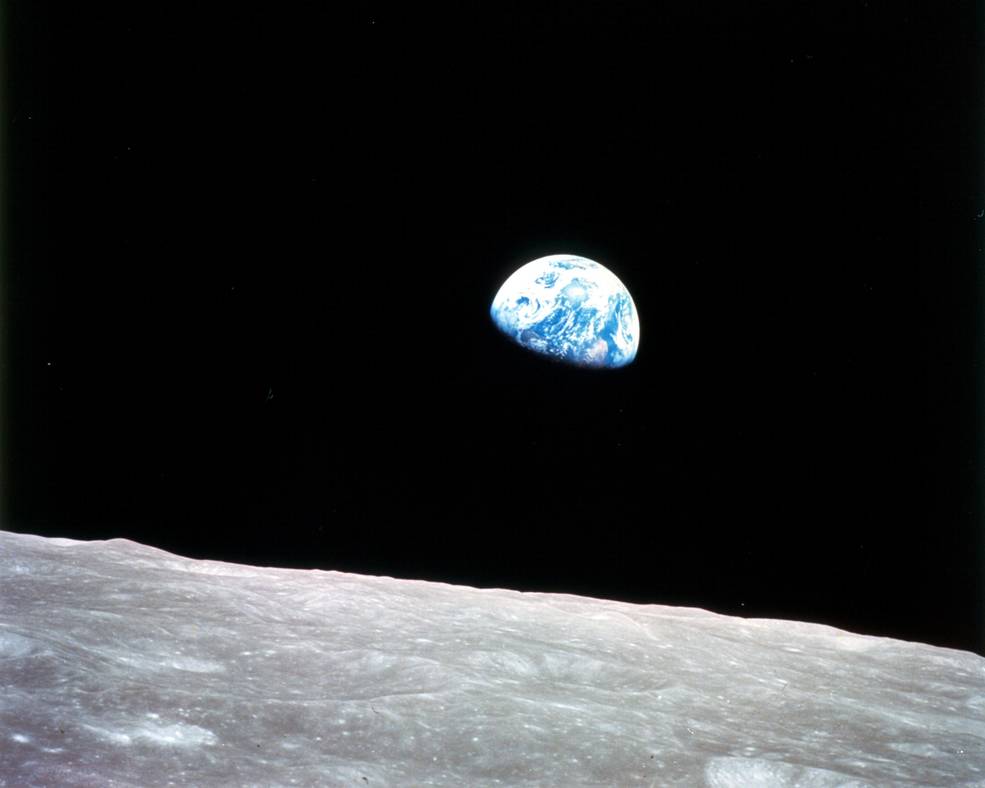
The famous "Earthrise" photo from Apollo 8, the first manned mission to the moon
To Americans, 1968 was one of the most turbulent, tragic years in their history with North Vietnam's Tet Offensive and the death of two prominent people Martin Luther King Jr. and Robert F. Kennedy.
Therefore the joyous mission was a rare high note. The three astronauts received countless telegrams after they returned safely home. But one stuck out from the others.
It said, "You saved 1968."
About the book
Jeffrey Kluger was really successful in giving the book the best narrative possible for non-fiction. Apollo 8 takes readers from Mission Control to the astronaut's homes, from the test labs to the launch pad and spacecraft.
It provides the mission's context, with the tensions of the Cold War between two ideological blocs and the competitiveness of the Space Race between the US and USSR. On October 4, 1957, when the Soviets launched Sputnik – the world's first artificial satellite and the first man-made object to be placed into the Earth's orbit – the American was like "Holy-moly, these guys are ahead of us."
It offers heaps of insights into how things work in a way that very simple to understand. I wasn't a fan of space exploration, but now I think I am.
"If you were planning to orbit the moon, you would need it to fire at least twice: the first time to slow you down, so you'd surrender to the moon's gravity and become a lunar satellite, and the second time at the end of your visit, so you'd speed back up and peel off for Earth"
"There were a few possible launch windows at the end of 1968, and all of them were dictated by the relative positions of the Earth and the moon. The moon was a moving target, orbiting the Earth at a speed of 2,288 miles per hour. This meant that when Apollo 8 left the ground, it would be aimed not at the spot the moon was occupying in the sky at that moment but toward where it would be three days hence"
It zooms in on many technical aspects of the spacecraft, from the Lunar Excursion Module (LEM) to the Saturn V booster (you may want to watch the launch of Apollo 8 to see how powerful the booster was).
"For the LEM, weight was everything, since even the Saturn V could lift only so much. The designers fought to give the machine as much capability as possible, while shaving off every available ounce"
"Travelling from the launch pad in Florida to the plains of the moon, at bottom, a business of using a very big rocket to get a very large payload moving very, very fast – faster than human beings had ever travelled before. That called for a rocket 363 feet tall with engines generating 160 million horsepower"
It helps me better understand the work of the astronauts and people in the Mission Control room. In fact, there were four hundred thousand men and women working in all of the offices, labs, factories, and universities in the sprawling effort to get Americans on the moon before 1970.
"Added to the usual tests of stamina and raw intelligence were more behavioural games and complex psychological drills"
"For both the astronauts and the mission controllers, the bulk of the training involved running simulated missions, then running them again and again and again so that everyone knew every step in every possible flight plan deeply, exhaustively, reflexively"
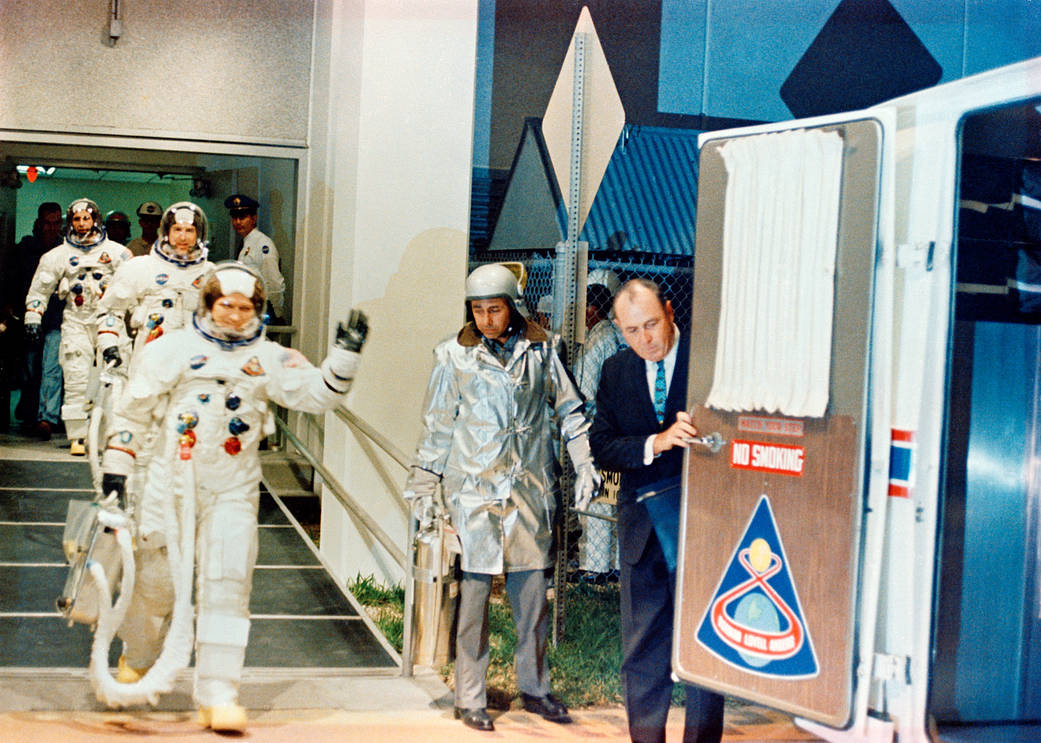
On December 21, 1968, the Apollo 8 crew leaves the Kennedy Space Center | Image Credit: NASA
The book also recreated the moment of utmost sadness when the three astronauts Gus Grissom, Ed White, and Roger Chaffee lost their lives in a fire during a preflight test of Apollo 1.
"The Apollo gave off a sound and a blast of air like a bomb, showering the white room with flaming debris and setting fire to loose papers on clipboards and desks. Inside the spacecraft, the fire rushed toward the freedom of the opening, completely engulfing the astronauts"
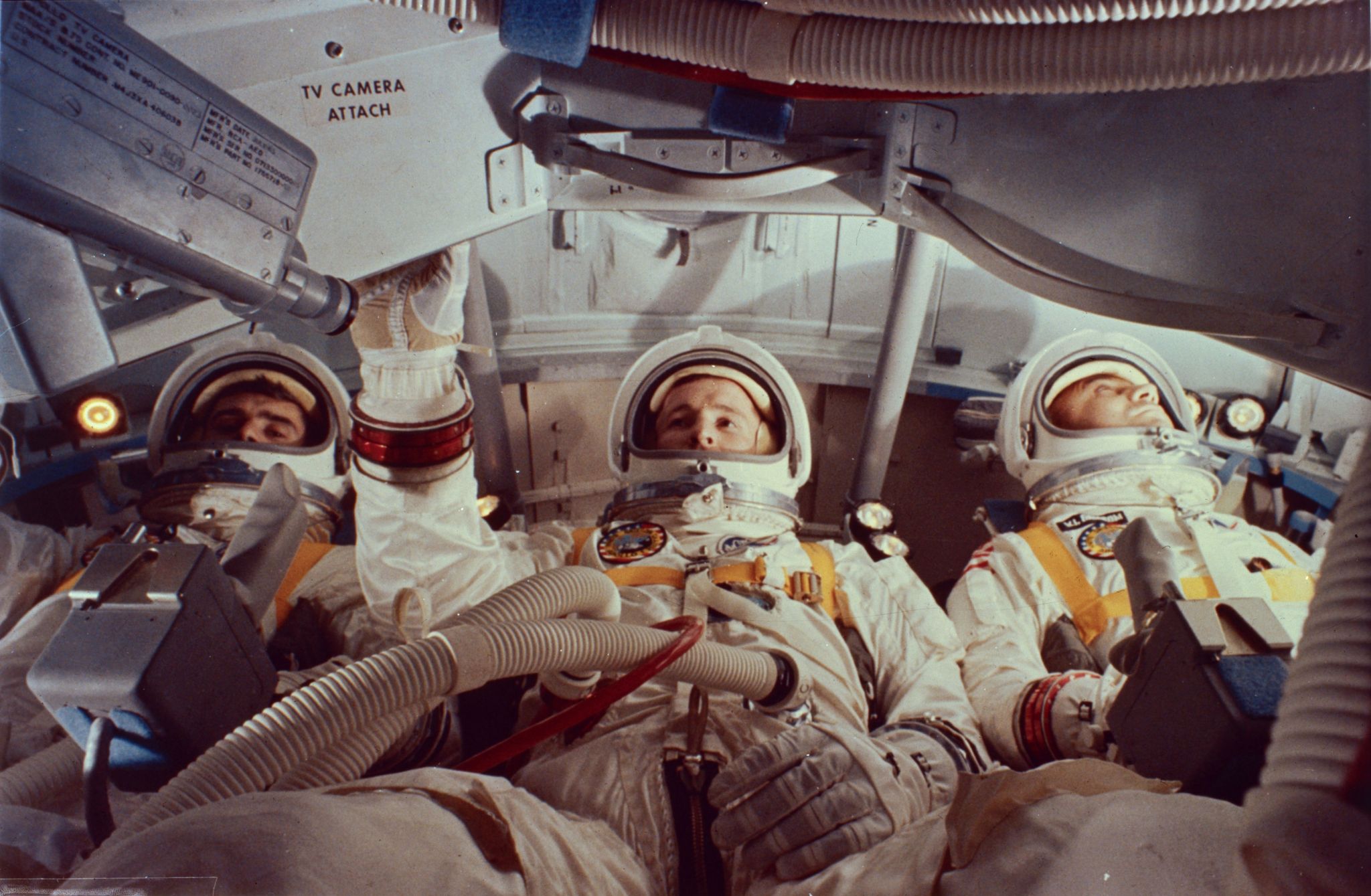
Virgil I. Grissom, Edward White and Roger Chaffee inside a practice module for the aborted Apollo 1 mission at Cape Canaveral, Florida | Image Credit: MPI/Getty Images
The moment of extreme anxiety when Apollo 8 trying to enter the moon orbit and lost communication for 35 minutes with the Mission Control
"Until they emerged back into the storm of radio waves streaming from their home planet, nobody on that planet would know if the three men were dead or alive"
"The silence in Mission Control stretched on, as the idle people at the consoles tapped their pencils, jiggled their feet, stubbed out their cigarettes and lit new ones"
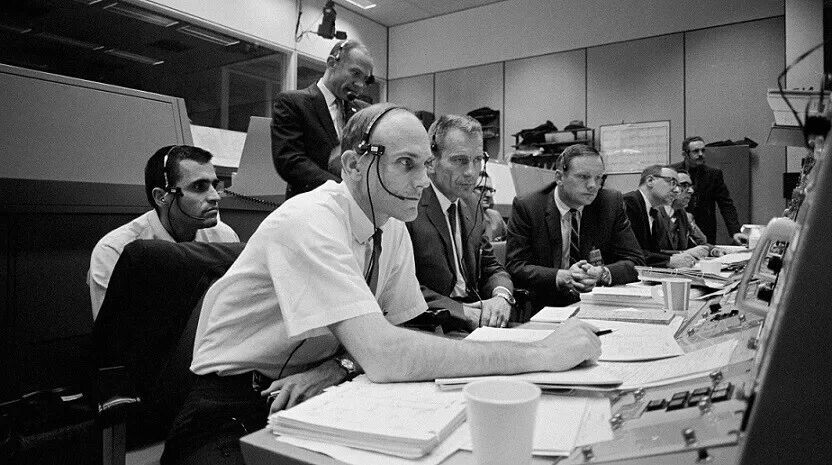
Apollo 8 Mission Control Room
And moments of relief and joy when the Mission Controllers heard the voice of Lovell again or when they witnessed history made.
"All the men around him had leaped up as one, whooping, cheering, and embracing one another in relief and jubilation"
"For the first time in history, it would switch from a circular route to a translunar route, with the Earth on the left-hand side and the moon on the right, and a spacecraft slowly creeping from one end of the board to the other. And then, in less than three days' time, the map would switch again, this time to an orbital map of the moon"
"The astronauts had seen the Earth, and they had seen the moon, but this was the first time they were seeing them together—the ugly, broken world beneath them and the lovely, breakable one in front of them"
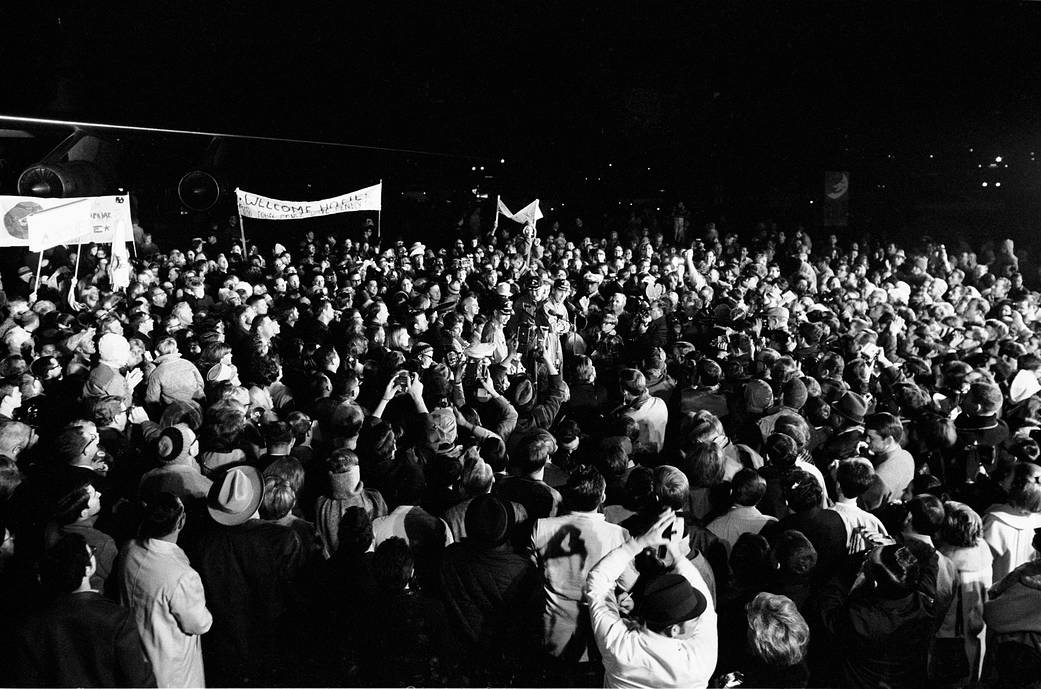
People at Ellington Air Force Base welcome the members of the Apollo 8 | Image Credit: NASA
Unsure about the chance to witness Elon Musk and his mission to Mars achieved in my lifetime, I still remain hopeful and optimistic about the upcoming achievements of space exploration. Who knows, there would be one day that we can receive a similar invitation:
"You are cordially invited to attend the departure of United States spaceship Apollo 8 on its voyage around the moon. Departing from launch complex 39 Kennedy Space Center, with the launch window commencing at 7 A.M ., December 21, nineteen hundred and sixty-eight"